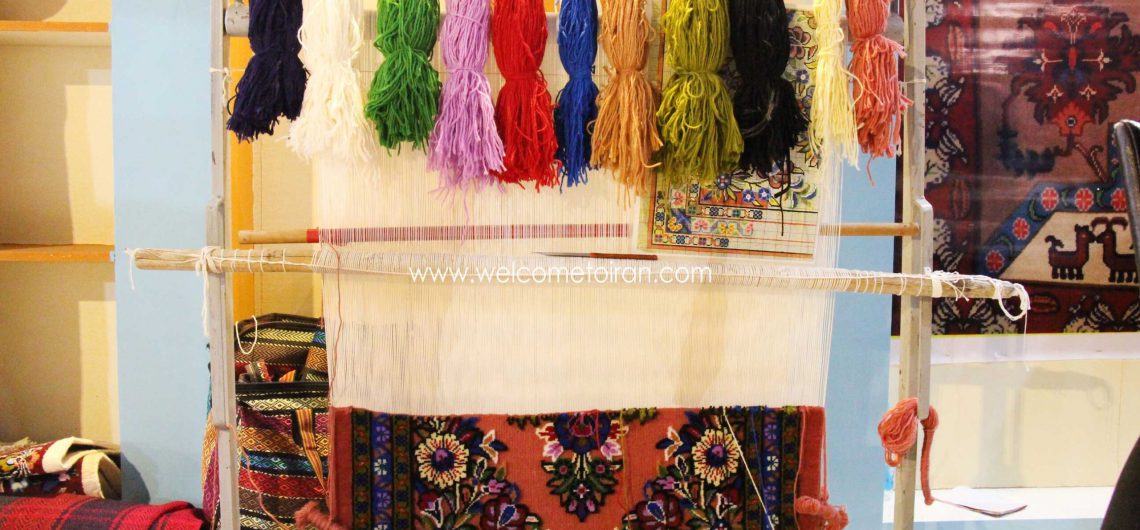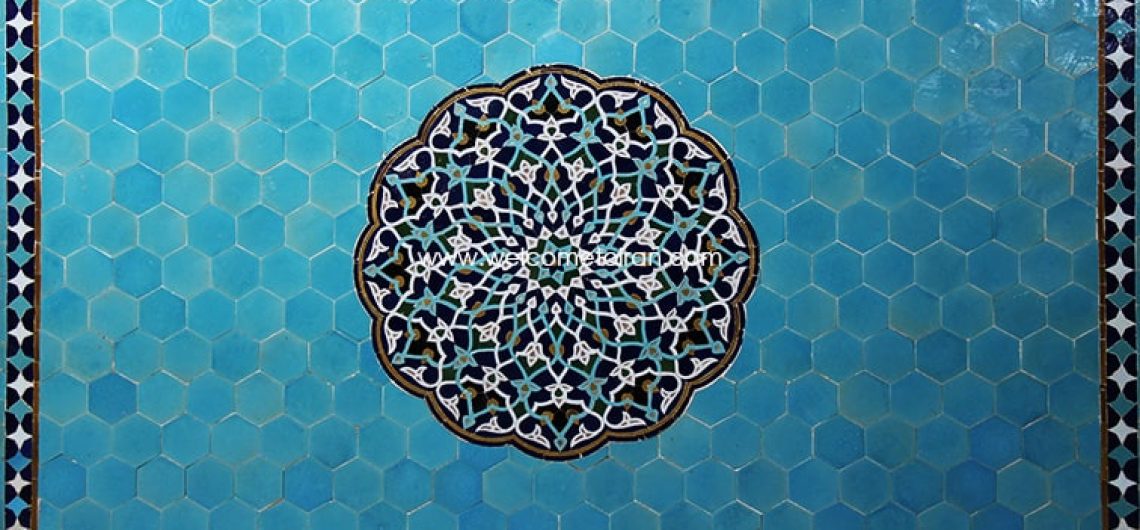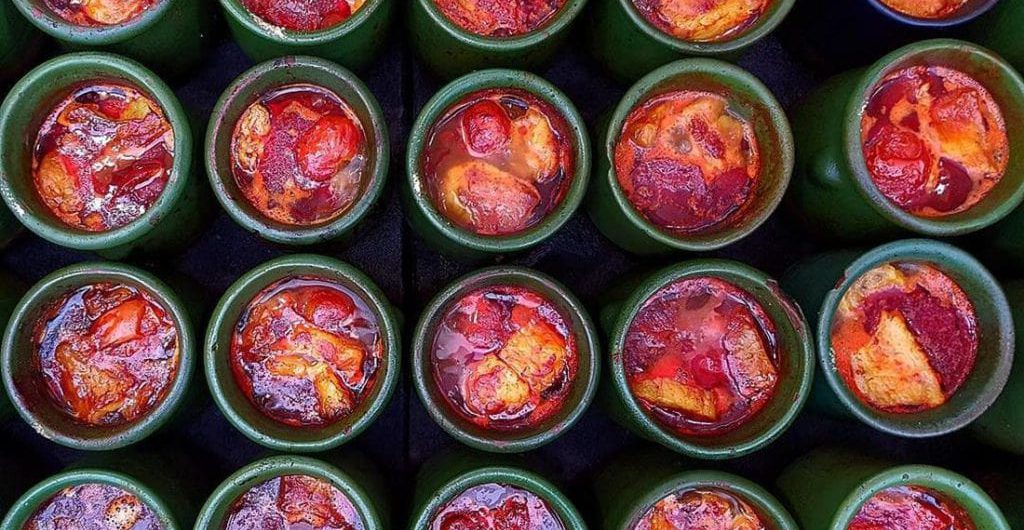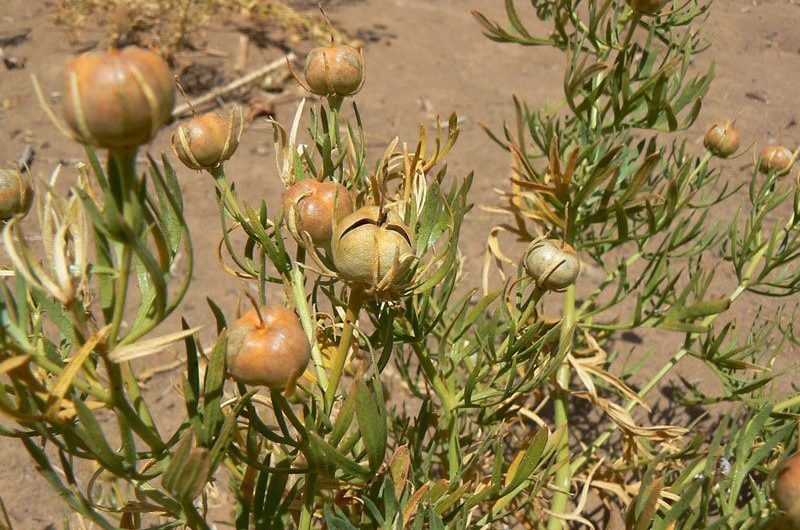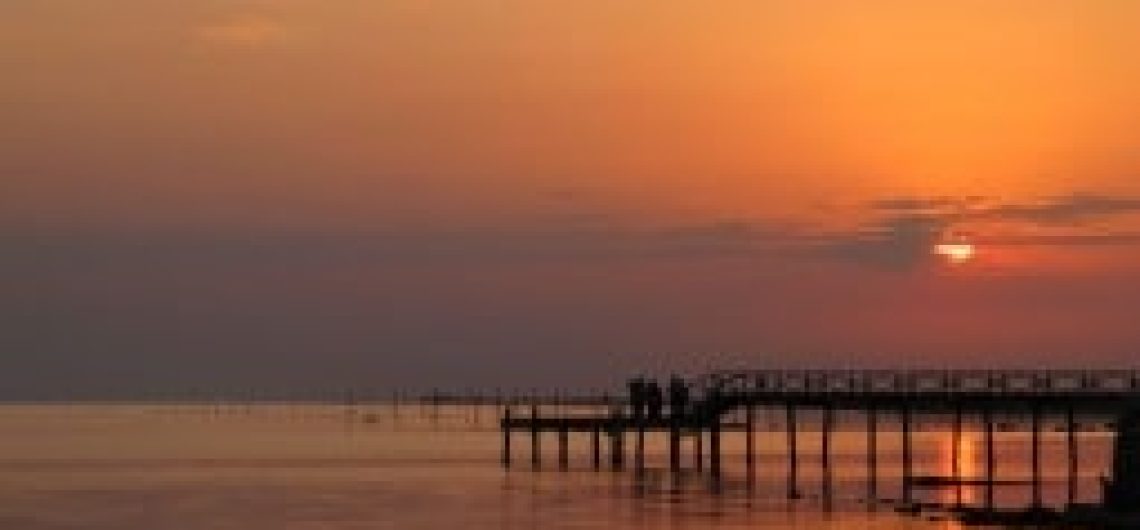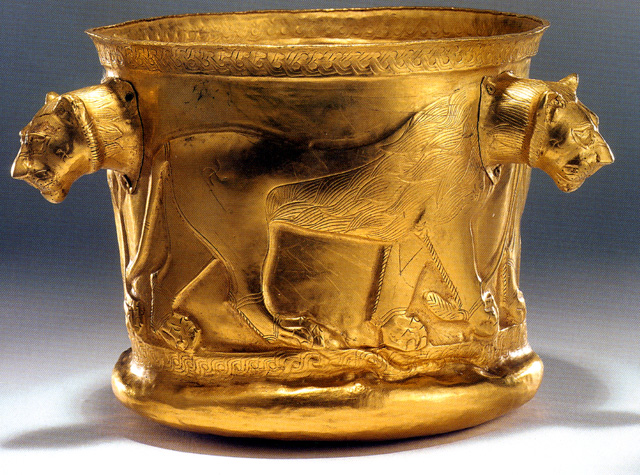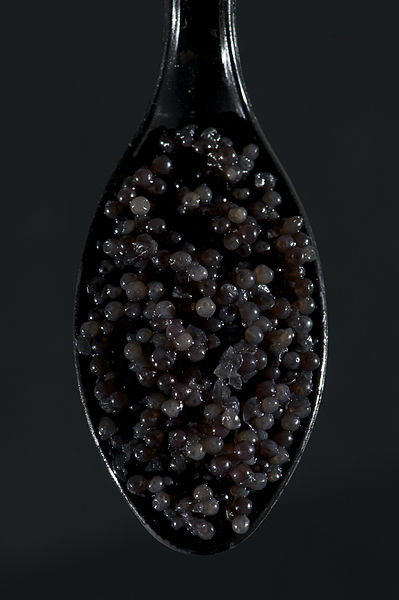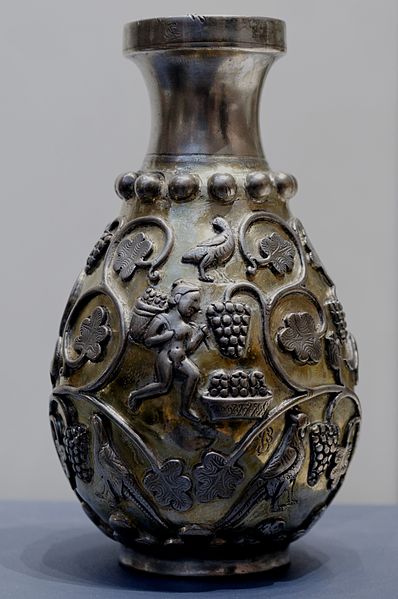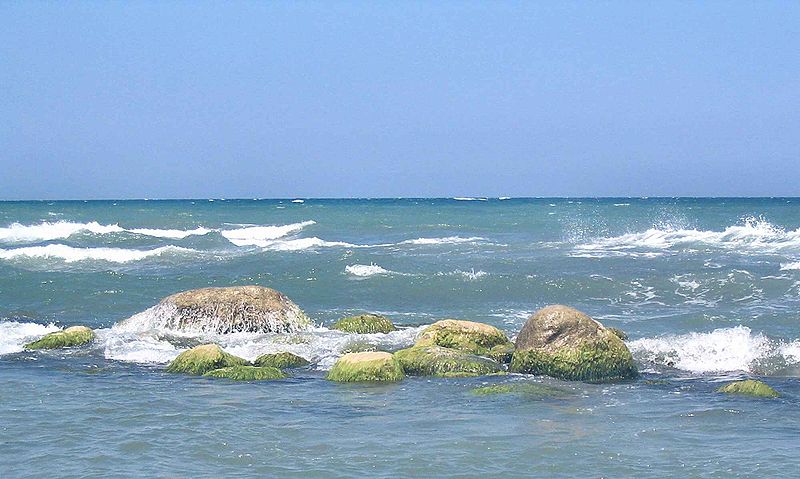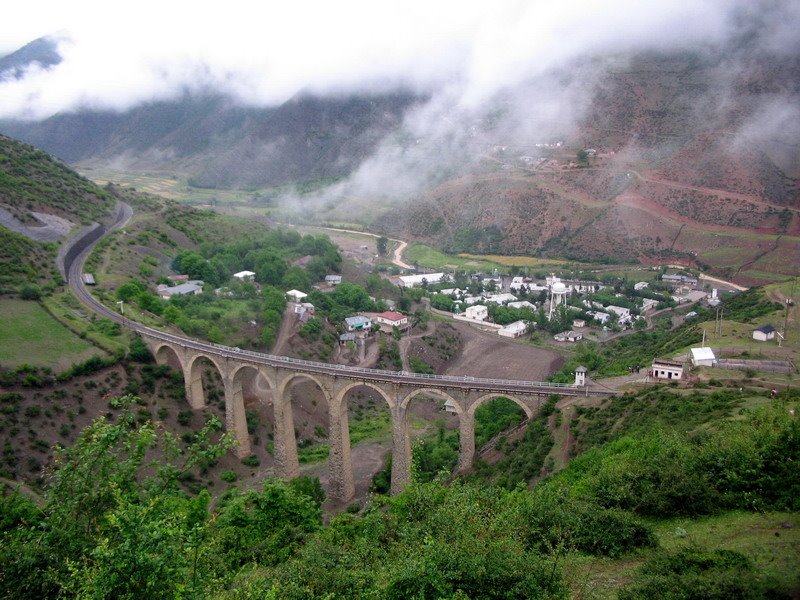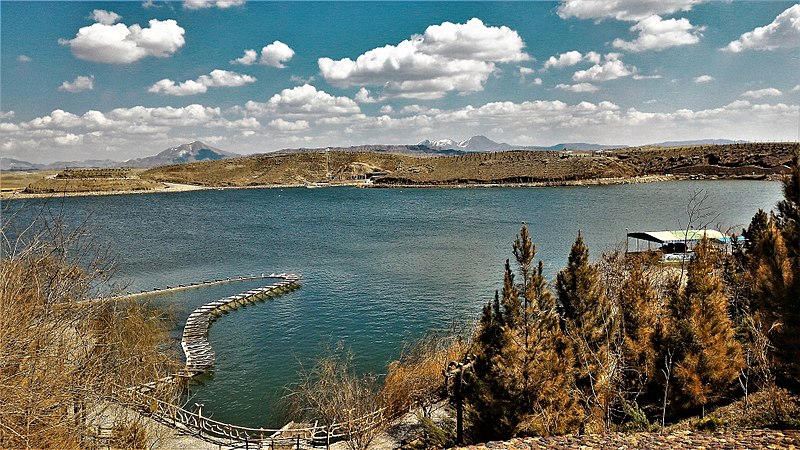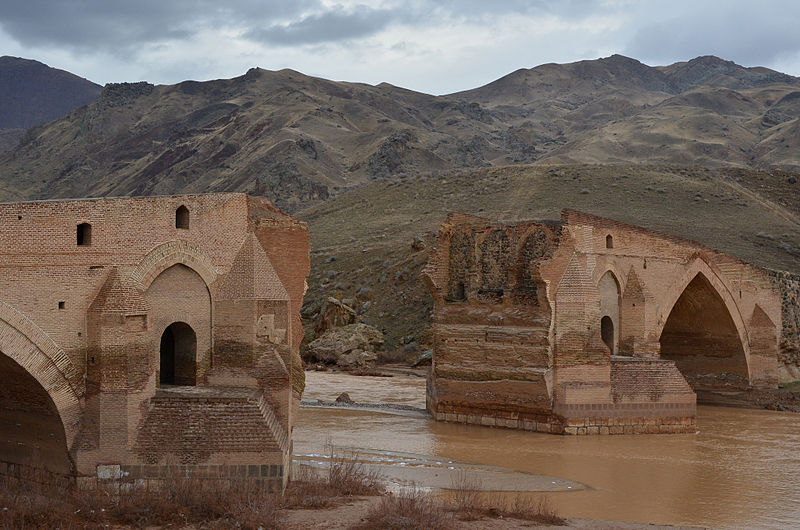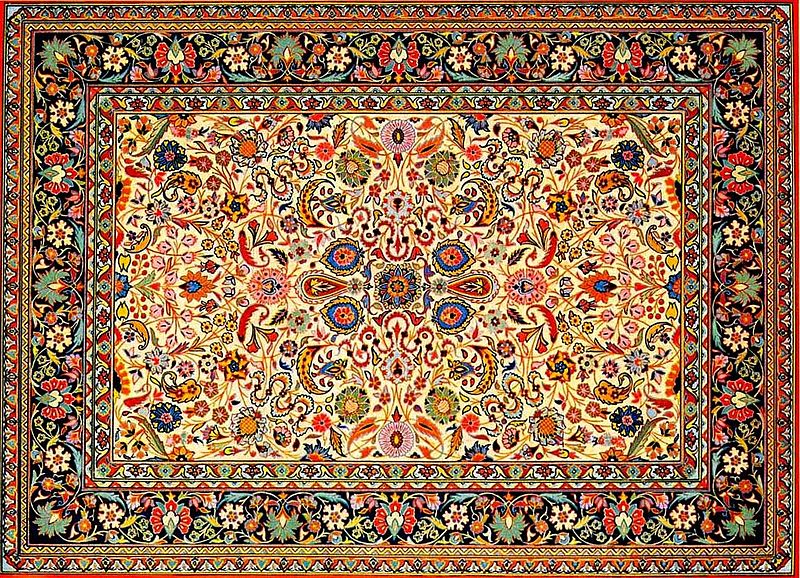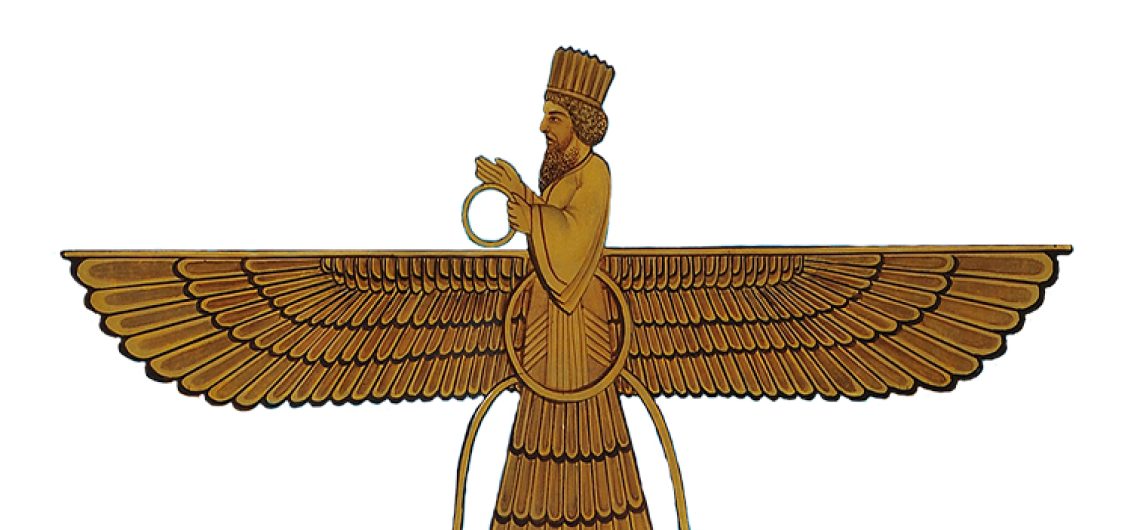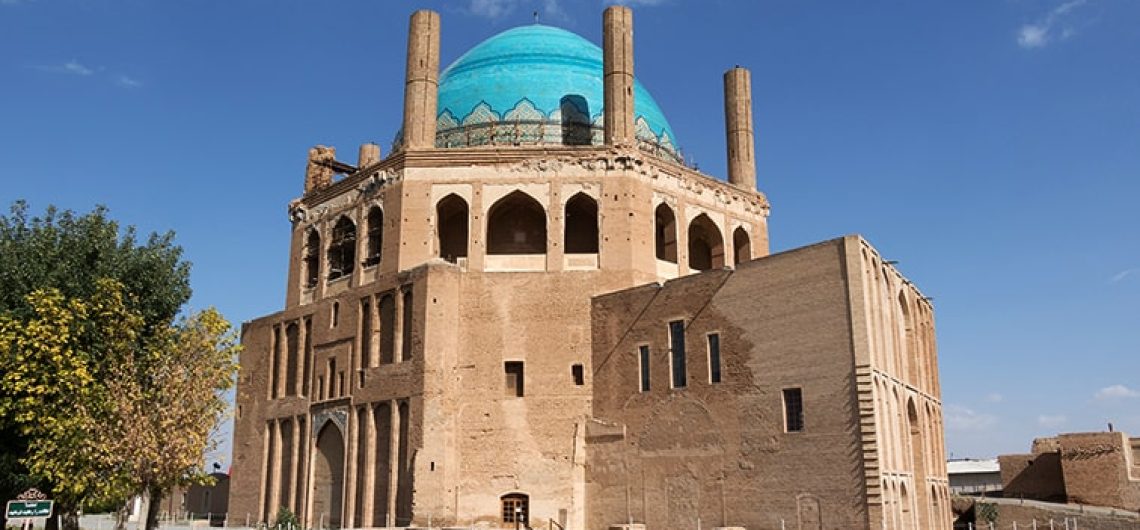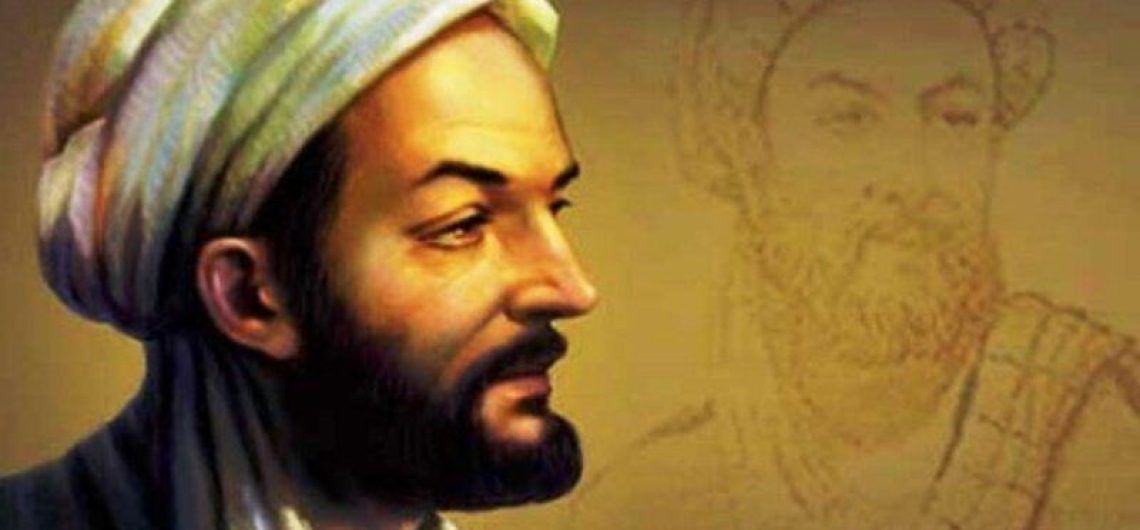Persian Rug; A Symbol of Iranian Originality
- Handicrafts
- Antique Persian Carpet, Carpet, Design Types of Persian Rugs, Exquisite Carpets, Handmade Persian Rugs, Iranian handicraft, Iranian Rug, Iranian Souvenirs, Modern Persian Rugs, Oriental Persian Rugs, Persia Rug History, Persian Carpet, Persian Rug Gallery, Persian Rugs, Silk Persian Rugs, Traditional Persian Rugs, Types of Persian Rugs
As mentioned in introduction of the encyclopedia of Persian Rugs: Iran is known in the world for two distinguished things: poetry and carpet. In other words, Iranian taste and Iranians’ aesthetic taste has been manifested in poetry and carpet in terms of concept and meaning, material, and form, respectively. However, the carpet art is privileged on the poetry as the hand-woven carpet is a collective art, while poetry is an individual art.”
The history of carpet is integrated with the history of human. Early human was familiar with the method of spinning vegetative fibers and bark of trees and consequently industries such as basket weaving over the centuries, and was able to produce not so much soft ground-cloth using the wool of animals that could live in the early communities. In Persian language, carpet means spreading and it refers to spreading equipment which is woven with yarn, wool or silk in different colors and patterns. Women were among those who made a lot of efforts in this art from the beginning and when other people were hunting animals, they attempt to weave baskets; rough hand-woven, animal wrappers and material carry bags. The early ground-cloths were made of animals’ soft skin and soft herbal fibers and straw; however, due to the expansion of social societies and lack of hunting, the need for more hand-woven ground-cloths is increasing day by day and their evolved weaving. Archaeological excavations reveal that using straws woven from Mesopotamian reeds was common from the 4th and 5th millennium and weaving Kilim rugs reached a high stage of development before the 15th century BC. No reliable information is available regarding the process of weaving and the people who originally weaved the early rugs since rugs are damaged by moisture and insects because of their natural structure. The oldest Persian rug found by archaeologist is the rug found in the frozen grave of one of the Scythian rulers in the Pazirik valley located 80 km from foreign Mongolia and hence called “Paziric” rug. This carpet was used as a horse cover and experts consider it as an Iranian carpet. In addition, they believe that it is one of the hand-woven productions of Medes and Parthians, due to its patterns which are similar to original Achaemenid’s motifs (the old Great Khorasan).

The colors used in this rug include orange-red, yellow, light green and orange. The similarity between the motifs of riders and pedestrians who walk alongside their horses and winged creatures observed in this rug and Persepolis motifs empower the accuracy of these researchers’ opinions. The evidence shows that Iranian carpet enjoyed world reputation during this period although there is no specific example from the Sasanian era. In this regard, the Chinese calendar (Sue Sue) in this era mentions the Iranian wool carpet as goods imported to China. Further, Persian literature has repeatedly mentioned the Sasanian King as the famous Taghdis throne of Khosropartviz, in which 4 carpets were spreading on each representing a season of the year – according to some reports. During the reign of Mongols (13th and 14th), weaving carpet reached to a very high level of beauty and technique. The flourishing of this industry maybe was coincided with Ghazan Khan Reign (1295-1307). However, the climax of the Iranian classic carpet which refers to the Renaissance of Iranian carpet is associated with Safavid kings’ era (1499-1722), especially during the reign of Shah Tahmasb I (1524- 1587) and Shah Abbas the great (1587-1629). 3000 carpets are left over from this period, which are kept in the great museums of the world or personal collections. Some carpet weaving workshops were built next to kings’ palaces during this time and various centers which already existed in Tabriz, Isfahan, Kashan, Mashhad, Kerman, Jushqan, Yazd, Gorgan, Harat and northern states such as Shirvan, Karabakh and Gilan were further developed and prospered. Furthermore, top painters integrated the briefed and combined Medallion schemes in the middle of rugs and corners. That is, the same design that was used on the cover of precious books in the 15th century.

With the occupation of the country by Afghans in the 19th century (1721-1722), this industry and art were downgraded. Persian Rugs, especially the exquisite carpets of Tabriz area were exported to Europe. During this time, representatives from European countries were sent out to all eastern countries which collected all the old and antique Persian rugs with a very intense competition and sent to Constantinople, which was still the most important market for the eastern carpets. When the source of the old carpets was finished, British (Zigler, 1883), American and German indefinitely set up workshops in Tabriz, Arak and Kerman. This routine continued until World War I, when the carpet production underwent a significant change. Currently, Persian rugs are regarded as the representation of the art history of this land, because they are the symbol of the Iranian art, which comes from a genuine and long lasting culture which embodies the ethnic, historical, geographical and religious identity of Iran. Shirin Souresrafil, as a carpet designer and writer, believe that the original patterns of Iranian carpets will never fall into oblivion and destruction due to their close relationship with the history, culture and other traditional art of Iran. As we do not observe any sign of aging on the motifs of the turquoise domes of Isfahan mosques, the designs of the rocks and pillars of the Persepolis and traditional paintings (miniature) of Reza Abbasi. The Iranian carpet industry with its world reputation is still the world’s first market leader despite rivals like Chinese carpets, export downward trend and the lower price of the carpet of the rival countries compared to Iranian carpet and given its coordination with the tastes of the global markets. This unmatched Iranian art is exported to about 32 countries, and although the traditional Iranian carpet markets like America, Italy, United Arab Emirates, Lebanon and Japan are regarded as the major target markets, the dramatic growth of the Iranian carpet is exported to Brazil, Africa and China.

Weaving process of Persian Rug
The steps which should be considered to begin weaving a carpet are as follows:
- Preparing instrument (carpet loom) and tools
- Preparing the intended design
- Warping ( installing warp threads or warps on the carpet loom)
- Kilim rug weaving, the beginning of the carpet
- Plain weaving of the beginning of the carpet, knotting on the warps using pile
- Design reading, knitting based on the colored houses of the design
- Wefting (under weft or thick weft, over weft or thin weft) and punching wefts
- Selvedge runners
- Punching wales and cutting extra top piles
- Trying to avoid potential flaws when weaving
- Taking the carpet off the loom: Finishing the work of a woven carpet
There are two kinds of knots which are common in Iranian carpet weaving including Turkish knot (Giordes-symmetrical) used in Tabriz, Haris in Hamadan and by Fras tribesmen an Persian knot (Senneh, asymmetrical) used in Fars language areas, Arak, Isfahan, Mashhad, Birjand, Kerman, Nain, Kashan and Qom. A common number of wales in Iranian carpets range from 20 to 90 wales. Coarse woven carpets usually include 20 and 25, and coarse woven tribe carpets include about 30 wales. The average good carpets consist of 40, 45 and 50 wales and good carpets have 50 to 90 carpets.

Design Types of Persian Rugs
Different kinds of Iranian designs are as follow:
Shah Abbasi (Palmetto flower design)
This design is based on certain designed flowers, which is known as “Shah Abbasi”. These abstracted flowers, along with the branches and leaves, and often with Eslimis and Khataeis in the background and margin of the carpet, constitute the main design of the carpet. The subgroups of the main design are named as Afshan (Overall flower design), medallion-corner design, medallion design, tree design, animal design, Sheikh Safi design, series edged, captured Shah Abbasi, edged medallion, Butteh and plain weave medallion-corner design.

Eslimi (Arabesque)
The main form of this design consists of curved branches among the leaves. These branches are abstracted form of the tree design. Slimi design includes different kinds and is usually repeated in most of the formats, but in some carpets this is the dominant design. The most famous Slimi design is the torpedo mouth Slimi, in which the end of each branch is split into two symmetric sections and is displayed in the form of the jawbone of a dragon and some buds are decorated in different parts of the stems of the branches, most of which are called Slims. This design is also divided into different subgroups due to changes and confiscations including Slimi, Slimi Bandi, Broken Slimi, Torpedo Mouth Slimi, medallion-corner Slimi, Mrdallion Slimi and Snake Slimi.

Afshan (Overall flower design)
Based on this design, flowers, leaves and branches are dispersed in the background of the carpet without any connection to each other and a lot of different sub designs such as Afshan Slimi, Afshan Khataei, Afshan Bandi, Broken Afshan, pomegranate flower Afshan, Shah Abassi Afshan, Branch wrapped Afshan, bouquet Afshan, animal Afshan and medallion Afshan.

Afshan (Overall flower design)
Botteh-Jeghegh (Paisley)
The Botteh design is the abstracted form of Cypress tree. The most famous Botteh designs include Botteh-Jeghegh, Botteh-antler, Botteh-Termeh, Botteh-Sarabandi, Botteh-Khergheie, Botteh- Ghalamkar Isfahan, eight flower, Botteh Kurdistan or eight Botteh, Botteh-Mirshekasteh, Botteh medallion-corner, Sanandij-Botteh, Afshari-Botteh, Bazoobandi-Botteh and Almond-Botteh.

Tree design
Although this design is based on branches and leaves, a lot of attempts has been made to maintain a high level of similarity with the nature. Small and large trees and shrubs, especially in individual forms, form the main components of the most designs of this group and are combined with other components. The famous tree designs are named as animal-tree, Sabzikar-tree or fountain, medallion-tree, Cedar-tree and vase-tree.

Hunting ground
The characteristics of the mentioned tree designs are available in the Hunting ground designs, but most of the Hunting ground designs demonstrate wild animals being hunted. The subgroups to this design include tree-Hunting ground, medallion-Hunting ground, panel- Hunting ground, medallion-corner Hunting ground and overall- Hunting ground.

Panel design
This design is made up of polygon panels and its sub-groups include Slimi-panel, Kerman Quranic-panel or pillar design.

In and out fish design
This design is among the native-tribe designs and its weaving method is similar to other imaginary-geometric designs and is not created from a design. Harati-fish, Farahan-fish and bee, Senneh or Kurdistan-fish, tiny or small fish and in and out fish are regarded as the subgroups to this design.

Golfarang
Golfarang is a combination of original Iranian designs with natural flowers, especially rose. Warm and light colors, especially red, are used in this kind of carpet. The subgroups of this design include rose flower (medallion-corner), Bijar Golfarang, Mostofi Golfarang, medallion Golfarang, Dasteh Gelo- Golfarang and flowers and nightingales-Golfarang.

Mehrabi (Prayer-niche design)
The original Mehrabi design is inspired by the Prayer-niche design and ornamentations such as cresset, pillars and capitals, flowers as well as the leaves added to. The subgroups of this design are known as tree-Mehrabi, vase-Mehrabi, pillar-Mehrabi, cresse-Mehrabi and landscape-Mehrabi.

Vase design
Vases in different sizes are often observed in this design and sometimes a large vase filled with flowers covers the whole area of the carpet. Occasionally, some small vases cover symmetrically the margin of the background or across the whole background. The subgroups of this design include Khataei-vae, two-way vase, Mehrabi-vase, overall-vase, Zel-al-Soltan vase (Flowers and nightingales), Haj Khatmi-vase, repetitive-vase, medallion-corner vase and one way-vase.

Moharamat
In this design, the entire background of the carpet is divided into several parallel rows longitudinally and which are decorated with patterns such as Botteh-Jeghegh, different kinds of Slimis and Khataei, and other flowers and leaves. In other words, the carpet background is stripped. The famous design of this group is Botteh-Jeghegh-Moharamat, which is known as Ghalamdani in some parts of Iran. The subgroups of this design include overall-Ghalamdani, tiny flowers with single colored background and Botteh with colorful background.

Tribe design
This design is the oldest and the most original carpet design in Iran which is the product of the imagination of native carpet weavers and reflects the nature and the environment of their habitat in the simplest form. This design does not follow regular and codified designs and has a delightful beauty. The sub-groups of these designs are often attributed to regions where the design has first become prevalent. The famous and old names of this group include Heybat Loo (related to Fars and Abadeh), Ghashghaee-Botteh, Afshari, Khatoni, Ardabil, Mazlaqan, Khamseh, Saveh, Tafresh, Heris, Mehrban, Gowaravan, Zanjan and Meshghinshahr, Bakhtiari, Kurdish, Yalameh, Gabbeh (self-colored), Sistan, Ferdows, Salar Khani, Ya’qub Khani, wood stone, AliMirzaee, Jon Beigi, Janamazi, Jowayin, Musa Abad, Balochistan, Veys, Ghorjeh, Senneh and bouquet.

Geometrical design
As the names of these groups of designs suggest, all motifs are formed geometrically by using angular lines. The major sub-groups of this design include Panel-geometry, medallion-Geometric, Moharamat-Geometric, Medallion-corner Geometric (Broken branch), plain-geometric, Khataei-Geometric, star-geometric (Mosaic), Khatam Shirazi-geometric and Joshaghani-geometric.

Vagireie designs
The purpose of using this term is to repeat a small piece of a design throughout the carpet, either along the length or the width. Because these parts join together in the repetition phase, it is called “BanBandi or Vagireh”. The sub-names of this group include Bandi-Slimi, Bandi-pichak, broken-Bandi, Inscription-Bandi, Mostofi-Bandi, Varamin-Bandi or Minakhani, diamond-panel Bandi or Lozenge, medallion-Bandi, tree-Bandi, Multiple – panel Bandi, Shir-Shekari Bandi or BazoBandi, Cedar-Bandi, caricature-Bandi or Molla Nasreddin, Bakhtiari-Bandi, Majlesi-Bandi, Bunch of grapes Bandi, animal antler-Bandi, Khatam Shrazi-Bandi and bouquet-Bandi.

Adoptive group
Most of the designs of this group such as Ghafghazi and Goebelen designs are very similar to the carpet designs of the border regions of Iran and neighboring countries and even other countries and hence are called “adoptive”.



